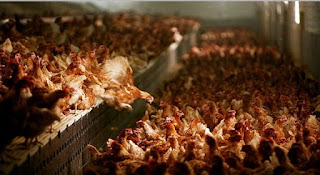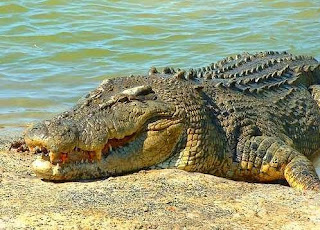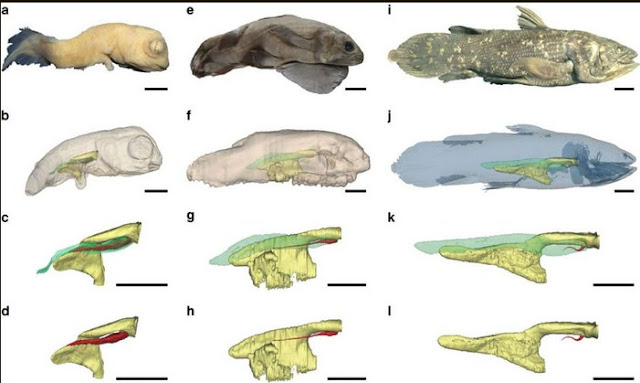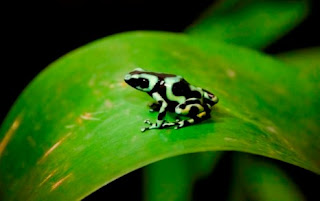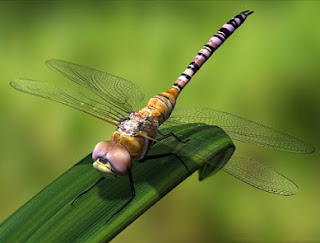The scorpion is one of arthropods or eight-legged animal, the scorpion into the classroom Arachida and belong to the order Scorpiones.
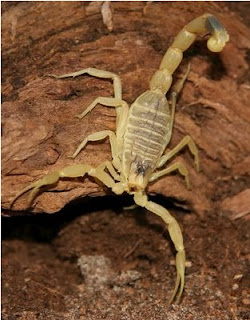 |
| Death stalker scorpions, Leiurus quinquestriatus |
Please note that all species of scorpion can have. In general, it can be included as a scorpion neurotoxin. An exception is Hemiscorpius lepturus which could have cytotoxic.
The composition of the neurotoxin consists of a small protein, as well as sodium and potassium, which is useful to interrupt the transmission of neuro victim. Scorpions use venom to kill or paralyze their prey so easy to eat.
More scorpions can function against other arthropod and most scorpions are not dangerous to humans. stings produce local effects (such as pain, swelling). However, some species of scorpions, particularly in the family Buthidae can be harmful to humans.
One of the most dangerous is Leiurus quinquestriatus, and members of the genera Parabuthus, Tityus, Centruroides, and especially Androctonus. Scorpions are most likely to cause the death of human beings is Androctonus australis.
Ancient scorpion emerged in the mid-Paleozoic period, about 400 million years ago. Unlike the scorpion in general, simpler forms of ancient scorpions. His body consists of many segments sheltered thin shells.
Another difference is the size of her body, several types of ancient scorpion that reached 100 times the size kalajenking today, 2 to 3 meters. In addition, the ancient kalajenking also live in the water.
Below are a few types of scorpions are quite harmless to her. some of which nothing can deprive human life.
Death stalker scorpions, Leiurus quinquestriatus
Type: Terrestrial, Opportunistic Burrower
Origin: Middle East and North Africa
Size: 10-13 cm
Temperament: aggressive
Deathstalker is known as a species that has the most deadly poison venom is a mixture of various toxins so powerful neurotoxin that can cause pain that is unbearable, then fever, followed by coma, convulsions, paralysis and death.
Fortunately, for a healthy adult human, although painful, but can not kill. Small children, the elderly and infirm individuals (eg weak heart) are at high risk groups will be death if this scorpion sting.
Arabian Fat-tailed scorpion scorpion, Androctonus crassicauda
Type: Terrestrial dessert
Origin: Middle East and North Africa
Size: About 10 cm
Temperament: Not too aggressive
Fat-tailed scorpion or Androctonus is one of the most poisonous scorpion species in the world. name aj "Androctonus" which means man-killer. Among all species Androctonus perhaps the most danger is Arabian Fat-tailed Scorpion, the poison he had could rival Deathstalker poison.
Toxins that this species had also consists of neurotoxin. This species jwb responsible for the deaths of several people each year. While this is still being debated who is the most deadly scorpions, whether Deathstalker or Arabian Fat-tailed
Yellow Fat-tailed scorpion scorpion, Androctonus australis
Type: Terrestrial
Origin: Middle East, North Africa, India
Size: More than 9 cm
Temperament: Sometimes aggressive, sometimes calm
In accordance with its type is the type of "Androctonus", yellow-tailed fat is a type of very deadly, although it is not as strong poison Arabian Deathstalker or fat-tailed, fat-tailed yellow poison can kill a person within 2 hours, if not immediately given the serum. Getting the serum is also not too easy, even in the United States alone in the serum is very difficult to obtain.
Spitting Thicktail scorpion Black Scorpion, Parabuthus transvaalicus
Type: Opportunistic Burrower
Origin: Africa
Size: About 12 cm
Temperament: Moderately aggressive
Why this kind of earned the nickname Black Spitting Thicktail Scorpion? This is because they can shoot them as well as cobra venom. poison that they can be sprayed up to within 1 meter, and when exposed to the eye can cause a feeling very sore and temporary blindness, but it can become permanent blindness if toxins are not immediately cleared.
His ability is what makes it is considered a species of harmless enough, but the toxicity are not considered lethal. even so toxic that possessed this kind of dangerous for children and people who are allergic to these toxins.
Striped bark scorpion scorpion, Centruroides vittatus
Type: Opportunistic Burrower
Origin: North America
Size: 5-7 cm
Temperament: aggressive pretty
Like most other scorpions, this species is also easily found around their habitat. But because of its proximity with humans, this type (although not aggressive) quite often harm humans. The sting is very painful.
For some people can occur for 15-20 minutes and not infrequently up to 2-3 days. but this type is rarely causing death, some reports suggest that this type are responsible for the death of some people, but it's all still being debated.
 No deep-sea squid species called vampire squid. Scientists have long wanted to know how the animals that live in these dark waters to reproduce. It turned out very different from the squid generally.
No deep-sea squid species called vampire squid. Scientists have long wanted to know how the animals that live in these dark waters to reproduce. It turned out very different from the squid generally.





